Gardening Terminology All Gardeners Should Know
- horticulturist and gardening expertFebruary 18, 2023
We are guilty of using jargon associated with our work and hobbies. Sometimes we forget that not everyone uses and understands these terms. Gardeners are no different. Sometimes we use terminology that can be a bit confusing and even intimating. Understanding some of the commonly used garden terms can help boost your confidence and enjoyment.
plant Lifecycles Plant Zones Sunlight NeedsGrowth HabitsGardening Terms
Common and Botanical Plant Names
You probably know quite a few plants by the names your friends, relatives or a fellow gardener used to introduce you to the plant. Plants also have a unique scientific names, gardeners usually refer to them by their botanical names. Common names are easier to pronounce, but one plant can have multiple common names. This can make it challenging to find information about or purchase the right plant.
The botanical name is unique to each plant and includes the Genus and specific epithet. Let’s use maple trees as an example. All maples are in the genus Acer. Plants in the same genus are fairly closely related. The second word, also in italics, is the specific epithet and the two words together identify the plant species. Using the botanical name tells us exactly what plant we are talking about.
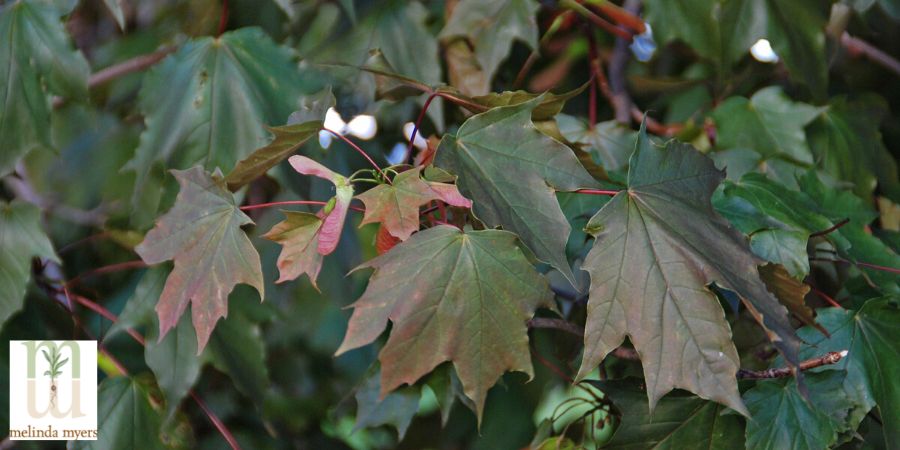
Acer-platanoides-'Schwedleri' (Norway Maple - Broadleaf Deciduous Tree)
When researching or shopping for plants using their botanical name ensures you find the plant you want. Let’s continue with the maple example. Many gardeners and even some people working in garden centers call the red-leaved varieties of Norway maple (Acer platanoides) red maples. The “true” red maple has green leaves all summer that turn brilliant red in fall. Its name is Acer rubrum. I have met gardeners who thought they were buying an Acer rubrum and ended up with a red-leafed variety of Acer platanoides and vice versa.
A third word may also appear in a plant’s botanical name. This may follow the abbreviation v. or var. This is a variety of species that has unique characteristics like flower color, fruit, or growth habit. If you take cuttings or start new plants from the seeds of a variety, they usually maintain that unique characteristic. The clay variety of butterfly weed (Asclepias tuberosa var. clay) was found growing in a prairie with clay soil. The seeds collected from this plant maintain the trait of being more tolerant of clay soil than the species.
A cultivar is a cultivated variety. These may be bred to achieve a unique characteristic or collected and propagated from a plant in nature that displayed a unique feature. Unlike varieties, cultivars only retain the unique characteristic when started from cuttings, grafting, or tissue culture. The seeds of these usually produce something different than the parent plant. Cultivars are written in regular font and enclosed in single quotes. Gay Butterflies with blooms in shades of red, orange, and yellow instead of all orange is an example of a cultivar. Its botanical name is Asclepias tuberosa ‘Gay Butterflies’.
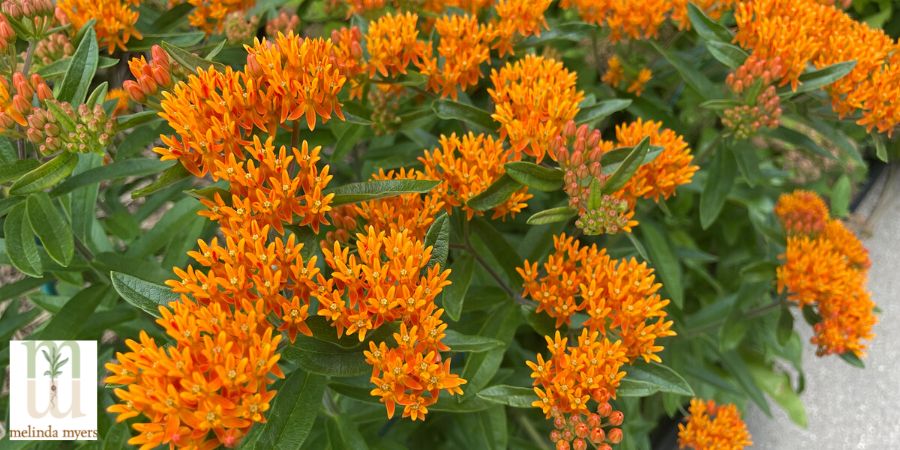
Asclepias-tuberosa (Butterfly Weed - Native Perennial Plant)
Is it an Annual, Biennial, or Perennial Plant?
Plants are divided into groups based on their lifecycles.
Annuals are plants that complete their lifecycle in one year. They start as a seed, flower, form seeds, and die within that year. Cosmos, marigolds, and sunflowers are commonly grown annuals. Where it can get confusing is some plants that are grown as annuals in cold climates actually live for multiple years (perennials) in milder locations. Wax begonia and lantanas are a few you may know.
You will often see subcategories of this group of plants. Tender annuals are native to tropical areas and are sensitive to cold soil and are easily damaged by frost. Impatiens and coleus are grown as tender annuals by many of us.
Half-hardy annuals are tolerant of cool air and soil temperatures but are easily damaged by frost. These are often started from seed indoors and transplanted into the garden after the danger of frost has passed.
Hardy annuals like alyssum and pansies tolerate cold soil, cold air, and frost. You may have included these in your cool-season spring and fall gardens and containers. Those of you gardening in milder climates may be enjoying them throughout the winter.
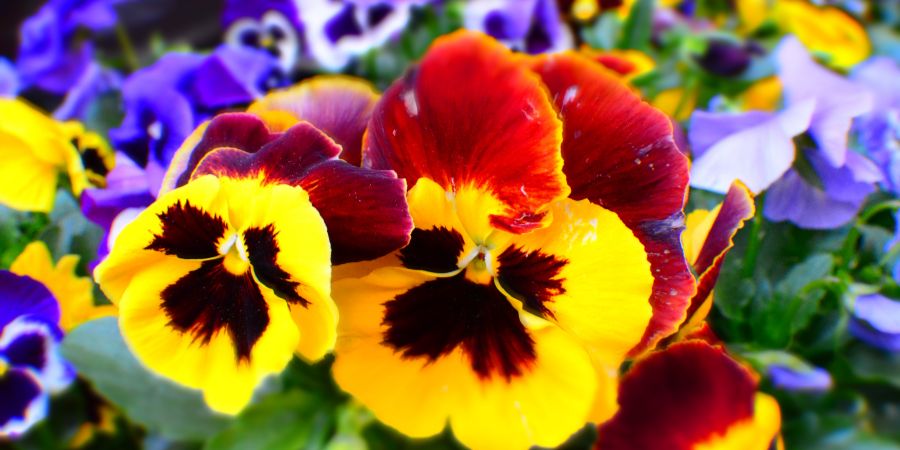
Pansies (Annual Plant)
Biennials take two years to complete their lifecycle. In the first year, these plants just grow leaves. In the second year, the plant grows more leaves, the flowers set seeds, and dies. These seeds may sprout in the garden repeating the cycle and producing new plants each year. Hollyhocks and some foxgloves and Rudbeckias are members of this group. Some growers will start biennials early in their greenhouses to trigger them to flower in your garden like an annual the first year.
Perennials are plants that are supposed to grow for years in the garden. The first year they sprout from a seed and most just grow leaves. In the second and subsequent years, they grow leaves and flowers. We often buy two-year or older perennial plants so we can enjoy flowers that first year in our gardens.
Perennials spend time developing a robust root system the first few years after planting. This led to the old adage “The first year they sleep, the second year they creep, and the third year they leap". This is a reminder to be patient as you watch that new plant grow into its mature size.
Help these plants, whether annual, biennial, or perennial reach their full potential with proper watering, soil preparation, and fertilization Milorganite is a low nitrogen slow release fertilizer that won’t harm new plantings and promotes balanced above and belowground growth that is more drought-tolerant and pest resistant.
Cold Hardiness Zones for Plants
You often find “Zones” listed on plant tags, seed packets, and in catalogs and gardening books. The numbers associated with the word zones represent the plant’s ability to survive the average minimum winter temperatures in the hardiness zones listed.
Each hardiness zone represents areas within a 10-degree Fahrenheit range of average minimum temperatures. This zone is subdivided into five-degree segments, labeled as a or b, to more precisely represent that area within each zone. The lower the number and letter, the colder the winter temperatures. When looking at the United States Department of Agriculture (USDA) Plant Hardiness Zone Map, you will see small islands of warmer or colder areas within the larger hardiness zone. Topography, elevation, urban heat islands, and large bodies of water influence the high and low temperatures of surrounding areas, causing these small variations.
You can find your zone on the USDA Plant Hardiness Zone Map by clicking on your state. Matching perennial flowers, vegetables, trees, and shrubs to your hardiness zones increases your chance of gardening success. This is just one of the factors to consider when selecting perennial plants for your landscape
Full Sun, Part Sun and Shade Plants
Matching plants to the amount of sunlight they need and prefer to thrive is also important for growing healthy plants. You will find a variety of definitions related to sunlight terminology. Some are more specific breaking down the categories into sub-categories. In an attempt to keep it simple let’s start with a more general overview.
Full Sun plants prefer six, preferably eight or more, hours of direct sunlight. Areas receiving only afternoon sun that is more intense are often suitable for both full and part-sun-loving plants. Those full-sun plants that are not very heat tolerant may benefit from some mid-day or afternoon shade.
Part Sun plants usually need at least 4 to 6 hours of direct sunlight while Part Shade-loving plants need 2 to 4 hours of direct sunlight. Since the morning sun is less intense, an east-facing location is also a good option for part shade plants.
Shade plants usually perform well with 2 hours of direct sunlight or bright, indirect light throughout the day. Growing part shade and shade-loving plants in more direct sunlight or hot midday and afternoon sun may result in poor growth or sunburned and scorched leaves.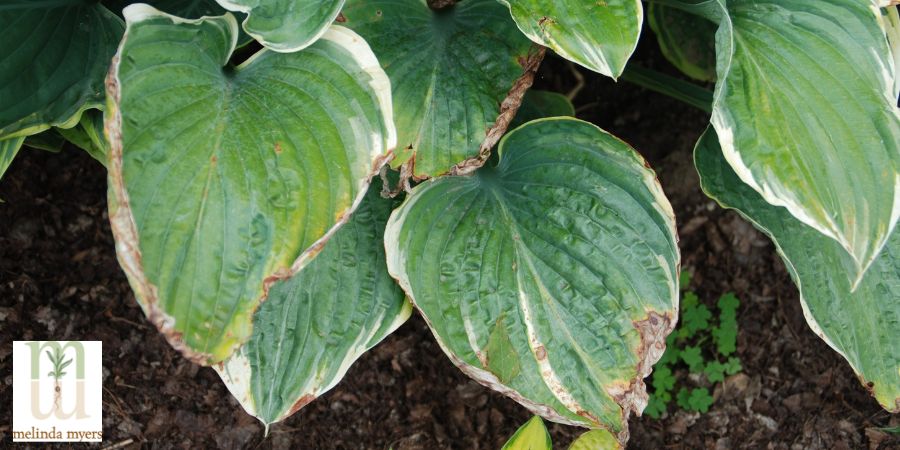 Hostas with leaf scorch from the sun
Hostas with leaf scorch from the sun
As you find plants that thrive in certain sunlight conditions, you will be able to add those with similar light requirements to those areas. And don’t be afraid to move plants that appear to need more sun or shade.
Monitor the amount of light wherever you grow plants throughout the day, seasons, and years. The angle of the sun changes throughout the year and nearby trees and shrubs leaf out and drop leaves as seasons change. This impacts the amount of sunlight reaching your plants. As plants grow larger, trees are removed and structures added or eliminated, neighboring plants may be impacted, and plant options may change.
Terms and Abbreviations Related to a Plant's Growth Habit
Plant tags and seed packets often contain letters in the descriptions of the plants. Here are a few of the more common ones you may see when shopping for plants.
D for Determinate: This term is most often used to describe tomatoes. Determinate plants grow a certain height and stop. All the fruit of determinate tomatoes tends to ripen in a relatively short period of time. Determinate plants are usually good choices for containers, hanging baskets, or training on short supports or in cages and obelisks.
I for Indeterminate: Commonly used to describe tomatoes, indeterminate plants continue to grow throughout the season. Indeterminate tomatoes also flower and produce new fruit as they grow. Many gardeners pinch out the growing tip of indeterminate tomatoes about a month before the average first fall frost. This stops the plants from growing new flowers and fruit that are unlikely to ripen before the killing frost. You’ll need tall stakes and big towers to keep these large plants upright.
Dwarf: These plants are smaller than the species but may not be as small as you think. Techny arborvitae is smaller than the American arborvitae, which grows up to 60’ tall. Many gardeners were surprised when this dwarf plant reached its mature size of fifteen feet. Much taller than they planned.
Compact: These plants are shorter and bushier than the species. Many larger plants are being bred to be more compact making them suitable for containers and small space gardens.
Disease Resistance: A plant’s disease resistance is often represented by letters in its description. You may see V (Verticillium), F (Fusarium), FF (Fusarium Races 1 & 2), FFF (Fusarium Races 1,2 & 3), N (Nematode), T (Tobacco Mosaic Virus), LB (Late Blight) EB (Early Blight) St (Stemphylium gray leaf spot), A (Alternaria stem canker), C (Cladosporium Leaf Mold), TSWV (Tomato Spotted Wilt Virus). Johnny’s Seeds has a comprehensive list of these.
AAS or All-America Selections winner: Plants with this designation have been tested nationally and selected for their suitability for home gardens. Winners have improved flavor, flowering, growth habit, disease resistance, or other quality that makes them better than varieties that are already on the market.
Native Plant: Definitions of what makes a plant a “native” vary. Some classify natives as plants growing in their region, country or continent. According to wildflower.org a native plant is “A plant that occurs naturally in the place where it evolved” without intervention from people.
Nativar: This is a relatively new term referring to a cultivar of a native plant. These are native plants bred to create shorter more compact growth, different flower color, or other feature.
H or Heirloom: Most agree an heirloom is a plant variety that has been around for more than 50 years, preserved and kept true to its parentage.
Hybrids: These are the result of breeding programs and are selected for uniform growth, fruit production, and other desirable characteristics.
GMO or genetically modified: This term is usually used to describe genetically engineered plants without including hybrids and plants bred through traditional means. In genetically engineered plants a gene or set of genes are transferred from one species to another to create a desirable trait such as in Roundup-ready corn. Genetically engineered seeds are not packaged for home garden use.
Non-GMO: Like GMO, non-GMO is usually used to describe plants that were not modified through a transfer of genes. These are naturally occurring species, varieties, hybrids, or selections made to improve plant performance, growth habits, hardiness, or other unique qualities.
Days to Harvest: This refers to the average number of days from planting until the plant begins producing fruit, flowers, or seeds. You may be harvesting sooner in a hot summer and later during a cooler growing season.
A Bit More Basic Garden Terminology to Know
Preparing plants for the transition from the greenhouse or those growing in your home to the outdoors is important. These plants will leave the comforts of the indoors and be exposed to harsher growing conditions outdoors.
Harden Off plants by gradually introducing them to outdoor growing conditions. Start by exposing them to one hour of direct sunlight. Increase this by one hour each day until they have adjusted to the amount of light conditions in their outdoor growing location. Stop fertilizing until the plants are planted in the garden or container. Be sure to move the plants indoors or cover them when the frost is in the forecast.
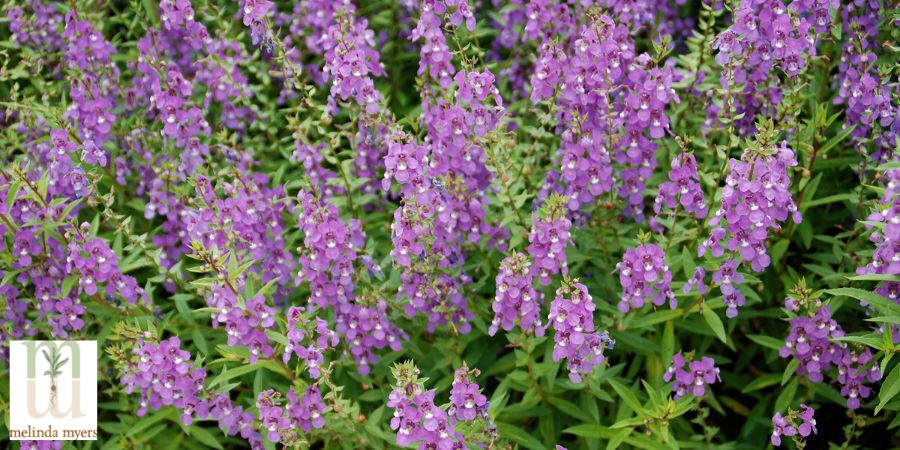
AngelMist-Lavender-Angelonia (Summer Snapdragon - Annual or Perennial Plant)
Placing transplants in a wagon or cart makes this process a bit easier. After one or two weeks the plants should be ready for their outdoor home.
Once your flowers are in the ground and blooming you may need to do a bit of pruning or grooming. Here are terms you have probably heard or read and wondered what they mean.
Deadheading is the removal of flowers as they fade. This may be done to promote more blooms or for a tidier appearance. It can also be used to help limit the number of seedlings produced by plants that produce an overabundance of seeds.
Self-Cleaning also called Free Flowering plants are those that do not need deadheading to look good and keep blooming. Annuals like calibrachoa, ageratum, and angelonia are popular free-flowering plants.
Pinching is a term usually used when grooming flowers and houseplants. Many people use their fingers to break off part of the stem. Others use sharp garden scissors, snips, or bypass hand pruners for quicker more precise results. These tools also result in a cleaner cut that looks better and closes quickly reducing the risk of disease.
A Soft Pinch removes just the uppermost portion of the stem where the leaves and tip are starting to develop. This practice encourages side shoots to develop lower on the stem without greatly reducing the plant’s height.
Use a Hard Pinch to remove a longer portion of the stem to encourage compact denser growth, especially on leggy plants. The tip and several inches of stem are usually removed. Make the cut just above a set of leaves, so the remaining plant still looks good while you wait for new leaves and stems to grow.
The more you garden, the more comfortable you will become with these and other gardening terms. In fact, they will soon become part of your garden vocabulary. Just make sure you help others master these and other commonly used garden terminology.

